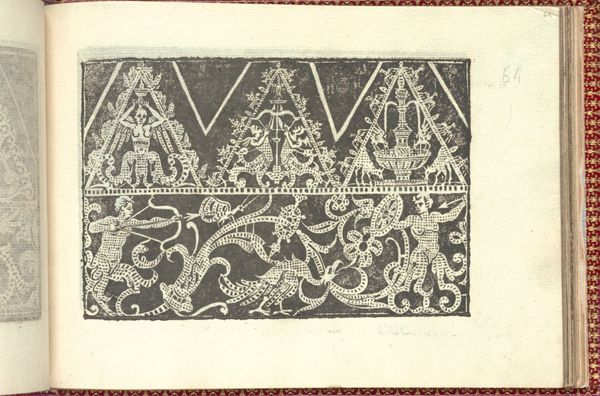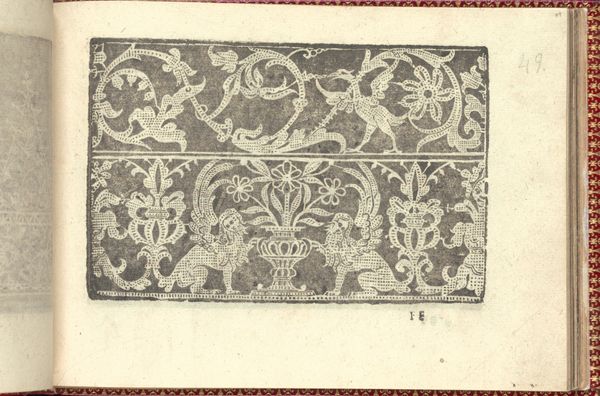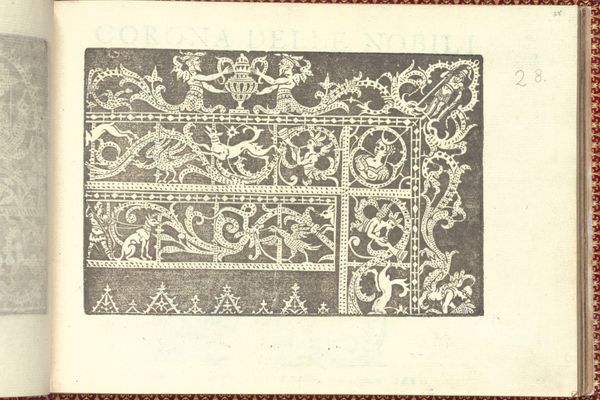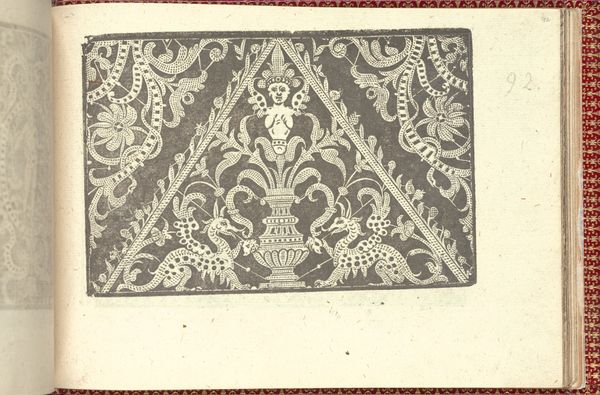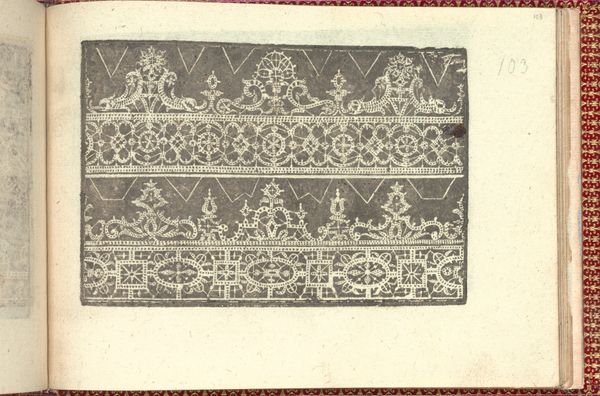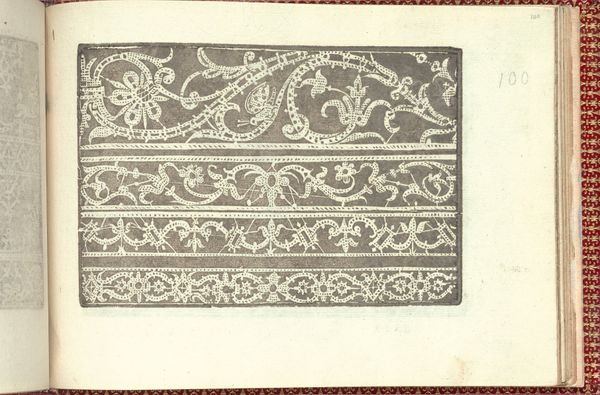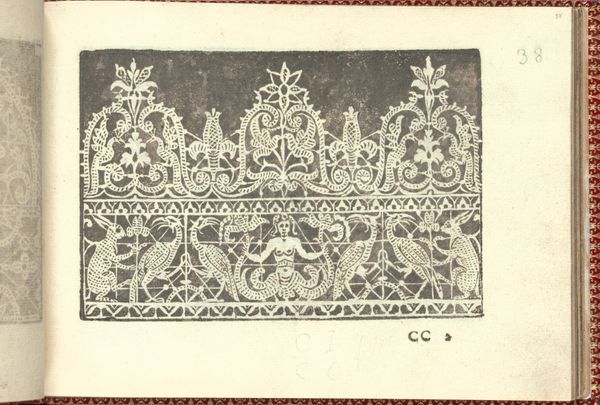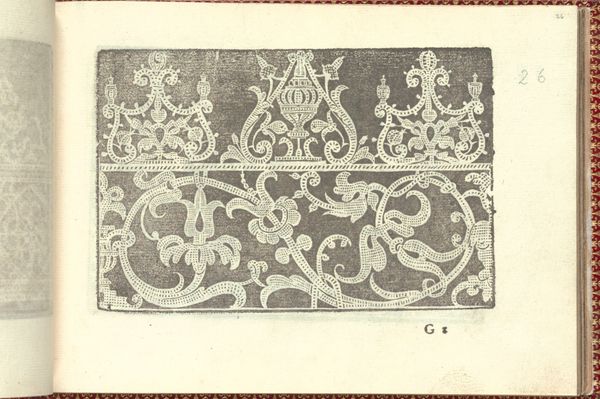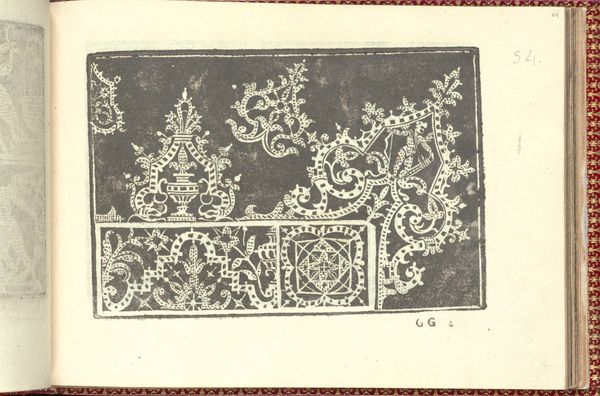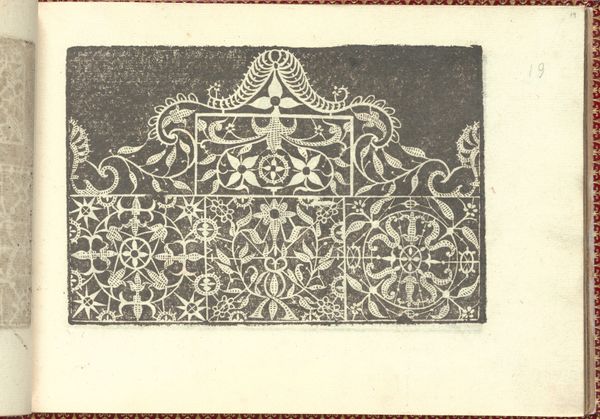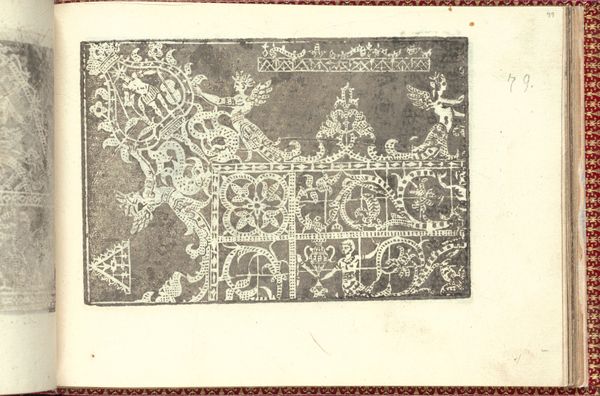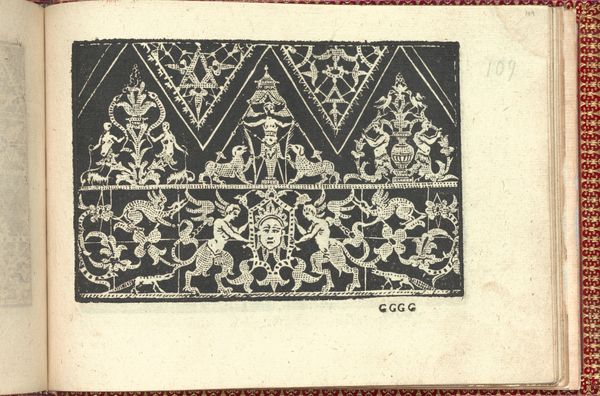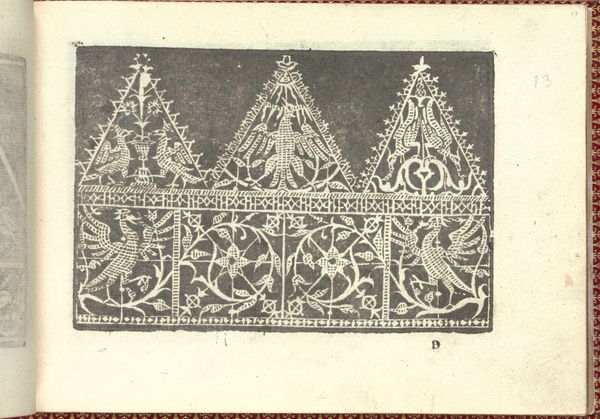
Corona delle Nobili et Virtuose Donne: Libro I-IV, page 75 (recto) 1601
0:00
0:00
drawing, graphic-art, print, engraving
#
drawing
#
graphic-art
# print
#
book
#
men
#
decorative-art
#
italian-renaissance
#
italy
#
engraving
Dimensions: Overall: 5 1/2 x 7 11/16 in. (14 x 19.5 cm)
Copyright: Public Domain
Editor: So this page comes from Cesare Vecellio’s "Corona delle Nobili et Virtuose Donne," a book of engravings from 1601. The book feels really ornate, even overwhelming in its detail. What strikes me, beyond just the intricacy, is its almost heraldic quality. What can you tell me about the imagery here? Curator: It’s fascinating how Vecellio situates women within a broader cultural context, isn't it? This page, like others in the "Corona," reflects the aspirations and roles Renaissance society prescribed to women. Do you notice how musical instruments are featured prominently? Editor: I do! There are lute-like instruments hanging under arches at the top, and two figures with horns in the center. What's the significance? Curator: Music, along with other arts, was considered a suitable accomplishment for noble women. Their proficiency was seen as a reflection of their refinement and virtue, markers of status. So, the inclusion of these musical instruments really emphasizes that connection to the virtues deemed desirable at the time. Editor: That makes sense. So it's not just decoration; it's reinforcing a social ideal. Does the inclusion of these horn-blowing figures suggest anything beyond the musical arts? Curator: Exactly! What does a horn symbolize in the socio-political context of 16th-century Italy? The imagery blends representations of domestic virtues expected of women and public proclamations traditionally limited to men. We need to consider how Vecellio navigates these intricate gendered social dynamics through these prints. Editor: It’s interesting how decorative arts could be employed to propagate or even challenge traditional expectations of the period. This has really expanded my thinking about the piece. Curator: Mine, too! By considering art's role in culture and public perception, we can discover novel historical perspectives of art and its role in culture.
Comments
No comments
Be the first to comment and join the conversation on the ultimate creative platform.
